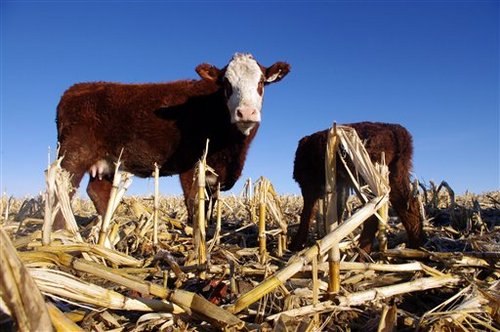Our past president, Duncan Allison, again provides insights into the latest in agricultural advances.
FARMING NOTES AUGUST 2016
Advantages of scale – A recent USDA ERS report makes it clear that the average size of cropland farms has been increasing at a significant rate. The midpoint acreage of cropland nearly doubled between 1982 and 2007 from 589 acres to 1,105. In fact the midpoint acreages increased in 45 of 50 states and more than doubled in 16. Perhaps not surprisingly the largest increases were in the contiguous 12 Corn Belt and Northern Plains states. Midpoint acreages more than doubled in each of the 5 major field crops and increased in 35 of 39 fruits and vegetables where the average increase was 107 %. This has been a persistent trend since 1982 although there may be evidence that the pace of consolidation may not be so great since 2011. The 2012 farm survey results will provide more definitive information when the 2012 has been fully studied.
Current farm economics – Critical mass/scale, data and timing are clearly uppermost in the minds of successful farmers today. A recent discussion with a Chester County custom farmer emphasized the significance of sufficient acreage to afford the tractors, drills and harvesters needed for carrying out timely field operations. It was suggested that crop farms with less than 500 acres are not likely to be able to afford new equipment.
Timing is critical for most farm operations as they need to be carried out at the optimal times for seeding and harvesting so appropriate farm equipment plays a major role. For the landowner with farmland, the custom farmer pays an agreed fee per acre and then manages those fields, ensuring the landowner at least covers taxes while the custom farmer assumes the risk of weather and crop prices.
Data is increasingly needed to make decisions whether on fertilizer rates or on marketing. The two huge uncertainties of crop prices and weather require very careful planning. “Planning for the worst and hoping for the best.” Today’s farmers must manage their business so that they can survive the variations in crop prices and major impacts on yields from the weather over which they have no control. On this basis it is surely no surprise that farms are getting larger.
Value of business plans – A 2015 IPSOS Agriculture and Animal Health Ipsos Agriculture and Animal Health’s research included over 600 farmers in Canada. The study represents a cross-section of grain and oilseed, dairy, beef, hog, poultry and egg and horticultural producers from across the country proving business management reaches across commodities and regions. This research is the first to establish a measurable link between beneficial management practices and farm financial success that is nationally representative, across commodities, using the largest sample source in Canada. The study found that those farms with a business plans get five times higher return on assets than those who don’t. Apparently only 26% of Canada’s farms have business plans.
Crop protection companies – Apparently ChemChina has given Syngenta until Sept. 13th to make a final decision about being acquired and November 23rd to finalize the deal. Already Dow has shed 700 jobs and DuPont 1,700 on their agreement to merge but it is expected that more jobs will be at risk when the merger is completed. Monsanto has turned down Bayer’s latest offer of $125/share but might agree to $130-135/share. It is said that Bayer’s financial backers could even go to $158 and a hostile takeover has also been suggested. The fewer major players amongst major input suppliers is creating uncertainty for distributors. How will any existing relationships be affected by the mergers? Who will they be dealing with in the future? There has also been considerable amalgamation at the distribution level, particularly amongst the nearly 3,000 farm cooperatives. Farming has become a very high tech and data driven business. Distributors and consultants are likely to play an even more important role in servicing not only the crop protection chemical, seeds and fertilizer needs of farmers but also in integrating the mass of data that is increasingly available on every aspect of crop and livestock production at the local and farm level.
A recent Precision Ag conference confirmed the high level of activity in data analysis, precision technology and prescription agriculture. At present the major criticism seems to be the lack of integration of all the technologies. There are indications of slow adoption as farmers wait for more user friendly and integrated systems. Apparently there were less drone development companies at the conference this year perhaps because it is not yet clear how drones can be economically used to provide valuable data.
Ag Progress Days – highlights. 512 exhibitors this year indicating the huge number of different businesses and service organizations involved in serving the farming industry today.
John Deere – forage harvesters equipped with immediate analytical capability for nutritional value to allow planning for best use. More leasing through John Deere by farmers. Clearly large scale needed for the big equipment. By 2025 50% of farms will have changed hands to next generation. Great need to ensure sound succession plans to ensure smooth transition and avoid tax liability.
Careers in agriculture now equivalent in earning power to engineers, computer etc. starting at $51,000/year. Great career opportunities mostly in ag business. Robotic milkers are good investment to maximize milk production per cow and allow farmer to focus on the dairy business so I was told!.
Business plans – younger generation tends to be more numbers and data driven so value business plans.
Resentment at EPA policing of soil conservation practices on farms without practical knowledge and understanding of costs. However it was pointed out that we would not have made progress without government legislation and involvement.
Over 5,000 farms have been preserved in Pennsylvania.
DAA 8/31/2016

